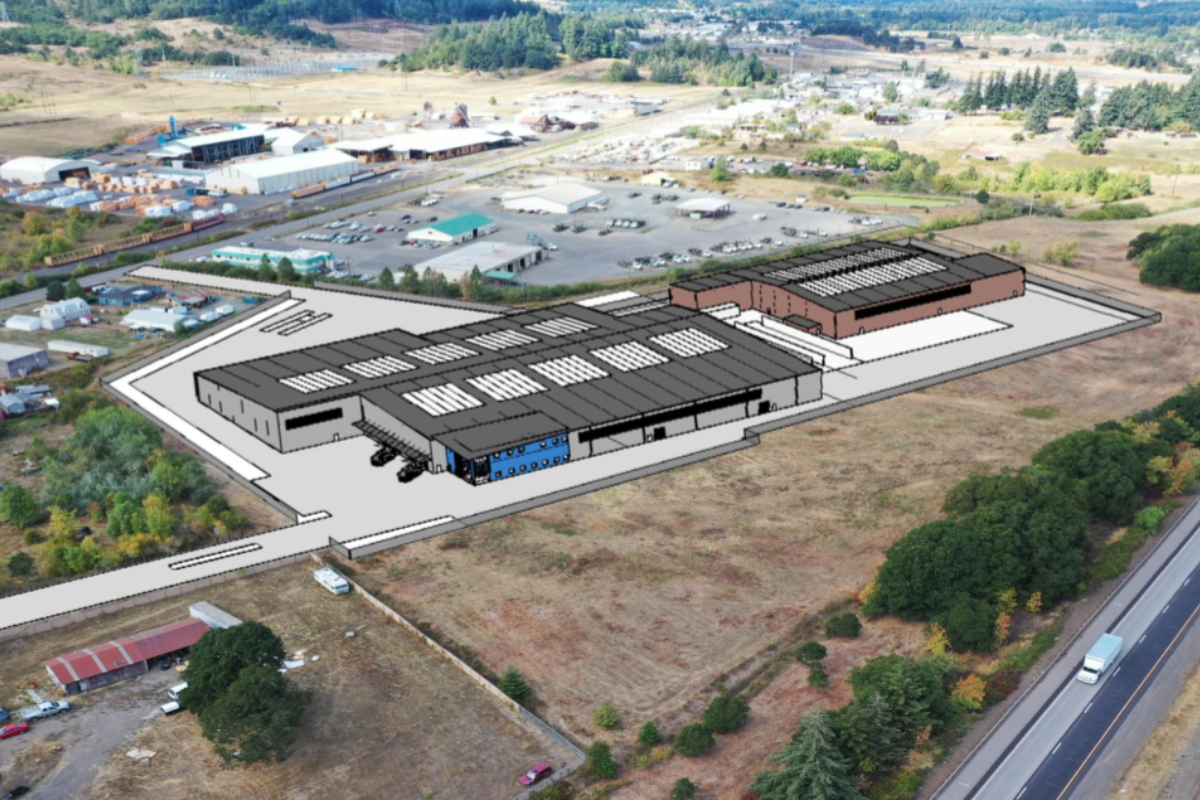
A recently introduced bill could allow a proposed solid waste facility in Lane County, Oregon, to bypass its turbulent permitting process. | Courtesy of Bulk Handling Systems
Officials in Lane County, Oregon, are pushing state lawmakers to support a new bill that would allow the construction of a controversial recycling and composting facility.
According to the Lane County website, the facility, called the CleanLane Resource Recovery Facility, would be a new kind of MRF called an IMERF, or integrated materials and energy recovery facility. The facility would recover recyclables and compost from a single stream and would serve to extend the lifespan of the nearby Short Mountain Landfill by 20 years.
The concept for a mixed waste facility in the area had been discussed for a decade but began to gather steam around 2018, stakeholders previously told Resource Recycling. County commissioners lent support to the project at the end of 2023. The facility would be built outside the city of Eugene in the unincorporated community of Goshen, with Oregon-based equipment company Bulk Handling Systems overseeing construction and operations upon completion. The project is expected to take two years to complete and cost $150 million, of which $35 million will be paid for by Lane County.
But despite the county commission’s approval, permits for CleanLane’s construction were denied in April 2025 due to local zoning laws. Lane County prohibits solid waste facilities from being built on wetlands in Goshen, as flooding can cause pollution from those facilities to damage the natural ecosystem.
According to an article by local newspaper The Register Guard, the permits have bounced between approval, denial and appeal over the past year, due to the difficulty in classifying the IMERF as either “recycling operations” or “a waste-related use.” The permits are currently in the appeals process with Oregon’s Land Use Board of Appeals.
The new bill, HB 3971, would declare solid waste disposal in the Willamette Valley a matter of statewide concern. This would temporarily give Lane County the power to issue permits for waste disposal facilities without a hearing or approval from a land use board. If passed, Lane County officials would be able to overturn the permit denial directly and circumvent the hurdles the project is facing. Critics claim the bill would be granting special treatment, according to an article by radio station KLCC.
At a meeting for the House Committee On Rules last month, proponents of the facility asked state officials to accelerate and pass the bill so the permits may be overturned and construction can begin sooner.
“Oregon has a proud history of innovation in responsible waste management and the prioritization of recycling and reuse efforts,” State Representative Lisa Fragala, a Democrat representing the district that covers Lane County, said at the meeting. “This project will serve as a practical demonstration of how Oregon achieves ambitious state level public policy goals.”
Fragala also mentioned Oregon’s recently passed bill to create more recovery sites for plastic bottles, as an example of the state’s recycling policy leadership.
Fragala cited support for CleanLane from local environmental organizations, such as Land Watch Lane County, who say decreasing reliance on landfills is more important for protecting the environment than the IMERF’s potential environmental harms. Fragala also promised an ecological study would be done before the proposal is accepted.
Pat Farr, commissioner for Lane County’s fourth district, which covers North Eugene and does not include Goshen, argued the IMERF will use technologies that did not exist when the zoning laws were created.
“Our creativity in designing this project now exceeds what our zoning once contemplated,” Farr said at the meeting. “We can wring our hands and balk or we could just accept that trying to describe future technology decades ahead of time is a very difficult task indeed.”
Committee members criticized project leaders for asking the state to change its laws to circumvent zoning rules that can be changed on a more local level. In response, State Senator and CleanLane supporter Floyd Prozanski, a Democrat representing the district that includes Eugene, argued that the bill’s ratification would fall within the precedent of the State’s past projects that used a process coined “super-siting,” which overturned denied permits to expedite the construction of emergency shelters in Eugene in 2023.
In a written testimony submitted to committee last month, Sanipac, the primary hauler for Eugene, asked the committee to oppose the bill, on the basis that there had not been enough stakeholder input and representation. Sanipac originally bid for the contract to operate the CleanLane facility, but was not selected.
Aaron Donley, a representative from Sanipac’s parent company, Waste Connections, wrote that the county is far from being in a waste disposal crisis, and that the bill is an attempt to circumvent the permit process.
“If there is a genuine statewide need to modernize zoning for mixed-waste sorting facilities, let’s engage with all counties, cities, and industry experts at the table; study best practices; and craft policy that works for everyone,” Donley wrote in his testimony.
If CleanLane is constructed, Sanipac and other haulers will have to pay higher tipping fees at Short Hills Landfill, as the county plans to raise the rates to finance the project, according to an article by Eugene Weekly. The facility would also change the way materials flow in the area — the article noted that Sanipac appears to have already started diverting its truckloads to other landfills, in particular one owned by parent company Waste Connections that is 167 miles away.
In the Eugene Weekly article, Lane County Commissioner Laurie Trieger said that the opposition “is framing itself as concerned for ‘Mom and Pop’ haulers, but really, the opposition is a large national corporate entity that is unhappy about the possibility of competition.”
According to multiple CleanLane advocates at the committee meeting, the project is in response to SB 263, a law passed in 2015 requiring counties to reach a 55% recovery rate for solid waste by 2025.